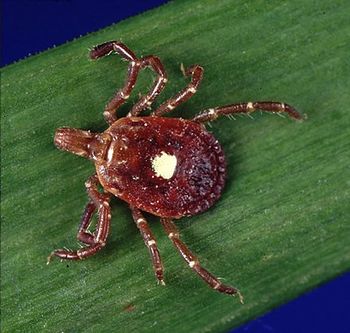
- October 2018
- Volume 3
- Issue 5
Zika: Where Are We Now?
The virus may be fading from mainstream headlines, but it is active and physicians must stay vigilant.
The Zika virus, which dominated mainstream headlines in 2016 with reports of infected women giving birth to babies with defects, has receded into the background. With the virus and its complications no longer front-page news, people might be forgiven for assuming the threat of this mosquito-borne plague no longer exists. But experts say Zika, which is transmitted by the Aedes aegypti mosquito, still presents a clear and present danger to travelers and residents in certain parts of the world, especially those with a tropical climate.
First some numbers: As of September 5, 2018, just 41 cases of Zika had been confirmed in US states, all in individuals who were returning from travel to affected areas. In all US territories, which include Puerto Rico and the US Virgin Islands, there were 82 cases as of September 5.1
Last year, there were 452 confirmed cases in US states, with 666 in all US territories.2 Given that 5168 cases were reported in the states and 36,512 in the US territories in 2016, it’s clear that the impact of the virus is much lower now.3 Still, virus activity continues in the Caribbean, most of Latin America, Central Africa, India, Indonesia, Malaysia, Cambodia, and Papua New Guinea, among other places.4
Although Zika cases continue to be reported, the epidemic has been declared over in Puerto Rico, according to Contagion® Editorial Advisory Board member Carmen Zorrilla, MD, professor of obstetrics and gynecology at the University of Puerto Rico School of Medicine in San Juan. “We knew there was an epidemic when people presented with rash and symptoms, even nonpregnant ones,” Dr. Zorrilla told Contagion®. “We’re not seeing that [now].”
Other experts agree. “Because we have fewer cases now, our attention span is a little limited,” said Thais dos Santos, MS, advisor on surveillance and control of arboviral diseases in the Neglected, Tropical and Vector-Borne Diseases Unit of the Communicable Diseases and Environmental Determinants of Health Department, a division of the Pan American Health Organization, in an interview with Contagion®. “It’s kind of fallen off a lot of people’s radar. But the virus itself isn’t any less dangerous. The virus hasn’t become less aggressive.”
According to Ms. dos Santos, in the Caribbean and Latin America (Brazil was at the epicenter of the crisis), many individuals may have become naturally immunized against the Zika virus as it swept through these regions, contracting it without necessarily even knowing it. Because only 20% to 40% of infected people ever show symptoms,5 she said, Zika often escapes notice.
Kate Fowlie, a spokeswoman for the US Centers for Disease Control and Prevention (CDC), agrees that natural immunity is the reason for the disease’s current low numbers. “We expect fewer Zika cases in 2018 because a proportion of the population was infected in 2016 and is no longer susceptible to infection,” she said. “However, mosquito-borne disease outbreaks are difficult to predict. There will be future outbreaks, including large ones, as well as years with reduced transmission, but it is impossible to know when or where these transmission patterns will occur.”
Dr. Zorrilla, however, is not sure widespread immunity is the reason for Zika’s quieting in Puerto Rico. “I calculated that about 10.5% of the pregnant women in Puerto Rico had a positive test for Zika,” she said. “That is not enough to cause herd immunity.” Her theory is that, much like dengue and other tropical diseases, Zika is following a natural cycle that ebbs and flows. “It seems that these vector disease epidemics...come in waves for periods of 3 to 5 years. The vector [the mosquito] is there. It’s a matter of time. We need to watch for the emergence of a new epidemic.”
But predicting when and if a Zika epidemic will hit is not simple. “This is a really difficult disease to do surveillance for,” Ms. dos Santos pointed out. According to her, of those who do experience the typical complaints of rash, fever, muscle weakness, and inflamed eyes (conjunctivitis), only up to half—and possibly significantly fewer—bother to seek treatment. “The signs and symptoms of people who have Zika are very nonspecific,” she said. In other words, the disease can easily be confused with something else, such as a cold or a mild case of influenza.
DEVASTATING CONSEQUENCES
As we now know, Zika’s all-too-easily missed symptoms may give no indication of its potentially serious complications. Currently, there is no treatment for Zika. Women who contract the virus are, if they are of childbearing age, at risk of giving birth to children with severe health problems including microcephaly, eye problems (including vision loss), epilepsy, nervous system defects, and hearing defects. An August 2018 Morbidity & Mortality Weekly Report from the CDC revealed that of 1450 children born to mothers known to have the Zika virus during pregnancy, 1 in 7 had a birth defect associated with the virus or a neurological abnormality possibly linked to the virus (or both).6,7 Experts fear the true toll of the disease could be even higher as children age. “We’re only beginning to scratch at the surface of the impact of this,” Ms. dos Santos explained.
Although rare, Guillain-Barré syndrome (GBS) is also a known risk of Zika.8 This nervous system malady can strike anyone and causes muscle weakness or, in its most extreme form, complete paralysis that can last up to several months. According to Dr. Zorrilla, GBS can result from a number of diseases, including dengue and influenza, but when it results from the Zika virus, it appears to manifest in a more severe form.
Whether of childbearing age or not, individuals traveling to or residing in places that saw a lot of Zika activity in the past couple of years should not be lulled into complacency by the drop-off in the number of cases, say many experts. Although another large epidemic is unlikely in the short term, infections are still taking place. “The continental United States and Hawaii will continue to see some travel-related cases, and local transmission is possible because the types of mosquitoes that carry Zika virus are present across a large portion of the United States,” said the CDC’s Ms. Fowlie. “As travelers visit countries with risk of Zika, they can be infected and bring the virus back to the United States, where it could be spread to local mosquitoes or to others through sex.”
The possibility of sexual transmission means that individuals must be very careful in their intimate relationships. The CDC has issued updated guidelines, including the recommendation that any man who might have been exposed to Zika avoid conceiving for at least 3 months after his symptoms start.9 (Initially, men were told to wait 6 months before trying to conceive with a partner.) This is because women are at risk of getting the virus from their partner’s semen, which can harbor it for several months. Women who are already pregnant are also at risk if they engage in unprotected sex with a potentially infected partner, so the use of a condom or abstinence is encouraged until the birth. The exact amount of time someone remains infectious after acquiring the virus is unknown.
According to Ms. Fowlie, the CDC received $350 million from the 2016 federal budget and used it to “prevent, detect, and respond to Zika,” she said. “CDC’s funding was used to increase mosquito control and surveillance, laboratory capacity, public health studies, technical assistance to state and local governments, and diagnostic development.” Some of the money went toward preventive measures, such as the spraying of insecticides to reduce the insect population in locales that have had disease activity. In some tropical locations without air-conditioning, places where people rely on open or poorly screened windows for ventilation, officials distributed Zika prevention kits that contained bed netting to help keep mosquitoes away during sleep. The kits also included condoms, mosquito repellent, and standing-water treatment tablets that kill mosquito larvae in puddles.
But the one thing that might make a real impact on Zika transmission rates, a vaccine, has yet to be approved by the US Food and Drug Administration. The National Institute of Allergy and Infectious Diseases reports that several types of vaccines are in development and will potentially be used to prevent Zika infection.10 They include vaccines based on DNA, inactivated Zika, and live Zika. Also in development is a vaccine that should offer protection against a variety of mosquito-borne diseases, including Zika. Most are in the clinical testing phase right now, and the medical community hopes they will be available sooner than later.
Ms. Saloman is a health writer with more than 20 years of experience working for both consumer- and physician-focused publications. She is a graduate of Brandeis University and the Medill School of Journalism at Northwestern University. She lives in New Jersey with her family.
References:
- Zika Virus—2018 Case Counts in the US. https://www.cdc.gov/zika/reporting/2018-case-counts.html. Updated September 5, 2018. Accessed September 6, 2018.
- Zika Virus—2017 Case Counts in the US. https://www.cdc.gov/zika/reporting/2017-case-counts.html. Updated August 2, 2018. Accessed August 20, 2018.
- Zika Virus—2016 Case Counts in the US. https://www.cdc.gov/zika/reporting/2016-case-counts.html. Updated February 14, 2018. Accessed August 20, 2018.
- Zika Travel Information. https://wwwnc.cdc.gov/travel/page/zika-travel-information. Updated August 14, 2018. Accessed September 5, 2018.
- Zika Virus. https://www.cdc.gov/zika/symptoms/index.html. Updated June 21, 2016. Accessed August 28, 2018.
- Rice ME, Galang RR, Roth NM, et al. Vital Signs: Zika-Associated Birth Defects and Neurodevelopmental Abnormalities Possibly Associated with Congenital Zika Virus Infection — U.S. Territories and Freely Associated States, 2018. MMWR Morb Mortal Wkly Rep 2018;67:858-867. DOI: http://dx.doi.org/10.15585/mmwr.mm6731e1.
- Zika in Babies in US Territories. https://www.cdc.gov/vitalsigns/zika-territories/index.html. Updated August 7, 2018. Accessed August 28, 2018.
- Zika and Guillain-Barré Syndrome. CDC website. cdc.gov/zika/healtheffects/gbs-qa.html. Updated August 9, 2016. Accessed September 5, 2018.
- Update: Interim Guidance for Preconception Counseling and Prevention of Sexual Transmission of Zika Virus for Men with Possible Zika Virus Exposure—United States, August 2018. https://www.cdc.gov/mmwr/volumes/67/wr/mm6731e2.htm. Updated August 7, 2018. Accessed September 3, 2018.
- Zika Virus Vaccines. https://www.niaid.nih.gov/diseases-conditions/zika-vaccines. Updated August 16, 2018. Accessed September 4, 2018.
Articles in this issue
Newsletter
Stay ahead of emerging infectious disease threats with expert insights and breaking research. Subscribe now to get updates delivered straight to your inbox.

















































































































































































































































































